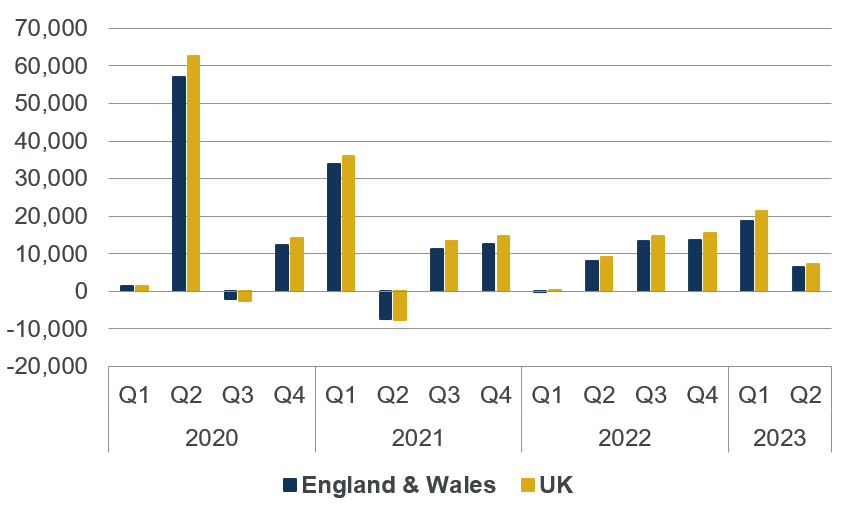 Cobus Daneel, Chair of the CMI Mortality Projections Committee, summarises the latest update on mortality in the general population during the pandemic
Cobus Daneel, Chair of the CMI Mortality Projections Committee, summarises the latest update on mortality in the general population during the pandemic
The Continuous Mortality Investigation (CMI) has been publishing frequent updates on mortality in the general population during the pandemic. This blog focuses on the sensitivity of results to population estimates.
To consider the impact of the pandemic on mortality, the CMI calculates age-standardised mortality rates (ASMRs) which remove the impact of changes in the population to provide a fairer comparison between years. We calculate ‘excess mortality’ as the difference between the actual ASMR and the ASMR for the corresponding period in 2019, the last full year before the pandemic.
Calculations of mortality rates and mortality improvements rely on estimates of the size and age distribution of the population. This is uncertain, and subject to revision from time to time, particularly following a census. We expect the Office for National Statistics (ONS) to publish revised population estimates for 2012 to 2020 (the period between the two latest censuses in 2011 and 2021) in September 2023, but we can estimate the impact based on data that the ONS has already published for the 2021 population.
The CMI revised its estimates of the 2012 to 2020 population for the purpose of calibrating the latest version of the CMI Model, CMI_2022, which was published in June 2023. The approach we took is not as detailed as the method we expect the ONS to use, as the ONS has access to more detailed data on migration and the timing of deaths, but our estimate should be more reliable than previous population estimates that took no account of the 2021 census.
The results of the 2021 census imply a lower population at pensioner ages in recent years than previously thought, which implies higher mortality rates and hence lower mortality improvements. The lower mortality improvements in turn lead to cohort life expectancies at age 65 being about one month lower than those based on the previous population estimates.
We have updated the dataset that we use to calibrate the mortality monitor, with effect from the week 26 and Q2 monitors, so that it is consistent with the CMI_2022 dataset.
The revised population estimates imply higher weekly excess deaths throughout the pandemic than previously thought. Over the course of the pandemic to date (between week 10 of 2020 and week 26 of 2023) we estimate that there were 200,100 excess deaths in the UK when using the revised dataset, an increase of 19,300 compared to the previous dataset.
2023 got off to a bad start, with more deaths registered in the first quarter of 2023 than any point since the first quarter of 2021 (which was affected by the second wave of the pandemic). However, as shown in the mortality monitor, an unusually high proportion of these death registrations actually occurred in December 2022. The second quarter also saw excess deaths, but at a lower level than the first quarter.
Compared to the first half of recent years, mortality in the first half of 2023 was similar to 2021 and higher than in 2019 and 2022, but much lower than in 2020. The first half of 2023 saw particularly high mortality for younger ages, with the 20 to 44 age group having higher mortality than in the first half of any year in the past decade.
